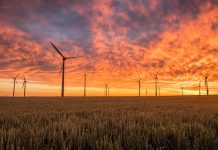The second integrated resource plan process , which seeks to identify SA’s future energy demand and the energy mix to satisfy it, is an opportunity for the advocates of renewable energy sources to tell the country what they can offer.
And they will inevitably elbow each other out of the way. The South African electricity industry is poised for major growth and everybody wants a piece of the expanding cake.
The technologies, which include solar, hydro and wind, are still on the periphery of the South African energy landscape, as coal continues to be a main source of energy.
It is beyond question that SA needs to diversify its energy mix. In fact, that ideal was espoused in the 1998 energy policy white paper. But the government will be the first to admit that until recently not much has been done to realise this ideal. However, there has been an air of optimism as, one by one, the hurdles that have kept renewable energy investors away are removed.
The National Energy Regulator of SA has unveiled a set of attractive renewable energy feed-in tariffs, which indicate what electricity producers will get for their power. This is an incentive for investment in renewable energy.
The state is also keen to address the industry’s concern about Eskom’s role as a producer and buyer of electricity. The mooted independent system and market operator will be the buyer of the electricity.
With conditions for entry improving, it is time for the various technologies to fight for their place in the sun. And that competition has started in earnest.
The wind energy industry has made a submission to the second integrated resource plan process in which they propose a 25% renewable energy contribution to SA’s energy consumption by 2025.
And it is no surprise that the South African Wind Energy Association says 80% of the targeted renewable energy power can come from wind power. Wind energy is the most competitive form of renewable energy power generation, it says.
“Contrary to what most believe, 30000MW of wind energy plant, dispersed across the country, would provide an average minimum power output of 7000MW, displacing the equivalent coal or nuclear base load,” says the association’s deputy chairman, Mark Tanton.
The body says the electricity network can accommodate 6000MW of wind energy “today without significant upgrading. Government should adopt this as a short-term target to develop this amount of wind energy by 2015, while working with industry to identify and develop the necessary grid upgrades to accommodate the 30 000MW target”.
But not everybody is convinced. Nuclear expert Kelvin Kemm, CEO of Stratek Business Strategy Consultants, says nuclear should be the priority. “And this argument has nothing to do with carbon dioxide emissions. If you look, all the coal in SA is found in the northeast. The consequence of that is an extensive distribution network. We need a big base load power plant on the other side of the country.”
He is also not a fan of the renewable energy feed-in tariff system. “(The renewable energy feed- in tariffs system) is silly. It is just another word for a subsidy.”
Poking more holes in the renewable energy argument, Kemm raises the intermittent nature of renewable energy as a further reason why it can only succeed if it stands side by side with a base load energy source such as coal or nuclear.
“You only get wind power when the wind blows and you get solar power when the sun shines,” Kemm says.
Tanton says that while wind energy is a “variable” resource, it is predictable. Modern international forecasting methods enable system operators to predict the available wind and solar resources for up to 72 hours ahead.
In its submission to the second integrated resource plan process, the wind industry takes aim at the nuclear and coal industries. It says that these have higher risks “due to the dependency on external unpredictable fuel, emission, construction and waste costs throughout their lifecycle”.
“The unpredictable construction timeline, capital cost, waste management and decommissioning costs for nuclear in particular make it a highly risky option, from a financial perspective.”
Credits: Business Day/Siseko Njobeni












